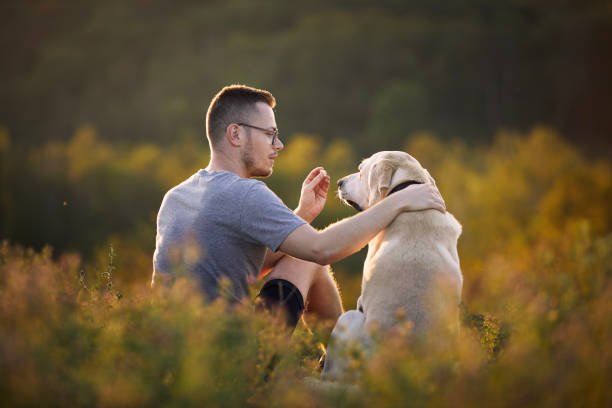Just like humans, pets can experience emotional changes, including depression. It’s often difficult to recognize because our pets can’t communicate their feelings directly, but behavioral changes can serve as key indicators of a deeper issue. As pet owners, it’s essential to be aware of the signs of depression in pets and understand how to address it to ensure their mental and emotional well-being.
In this article, we’ll explore the common signs of depression in pets – whether dogs or cats – along with practical steps you can take to help them feel better. We’ll also touch on some potential causes of pet depression and when it’s time to seek professional help.
Common Causes of Depression in Pets
Before diving into the signs, it’s important to recognize some of the triggers that can lead to depression in pets. While every animal is different, some common factors include:
- Loss of a companion: Whether it’s the death of a fellow pet or a family member, the loss of a companion can have a significant emotional impact on pets.
- Change in environment: Moving to a new home, changing the household structure, or even altering a pet’s routine can cause stress and anxiety, which may develop into depression.
- Illness or injury: Pets that are dealing with pain or chronic illness may show signs of withdrawal or sadness as they cope with their condition.
- Lack of attention or stimulation: Pets, especially dogs, thrive on interaction and mental stimulation. A lack of activity, playtime, or companionship can lead to boredom and eventually depression.
Signs of Depression in Pets
- Loss of Interest in Activities
One of the clearest indicators of depression in pets is a loss of interest in activities they once enjoyed. If your dog no longer wants to go for walks or your cat no longer plays with their favorite toy, it may be a sign they’re feeling down. Pets may stop engaging in activities like fetching, playing with other animals, or even showing interest in treats. - Change in Appetite
Depression can cause pets to lose interest in eating, leading to unexplained weight loss. In contrast, some pets may eat excessively as a coping mechanism, resulting in weight gain. If you notice your pet is eating significantly more or less than usual, it could be linked to depression or an underlying health issue. - Excessive Sleeping or Fatigue
A pet that is depressed may start to sleep more than usual. While pets do sleep a lot—especially cats – a noticeable increase in sleeping habits, lethargy, or lack of energy can indicate that something is wrong. Dogs may seem uninterested in activities they typically love, and cats may sleep in hiding spots for extended periods. - Withdrawal or Isolation
Just like people, pets may become withdrawn when they are feeling depressed. A dog that used to follow you around the house might retreat to a quiet corner, or a social cat may start hiding under furniture. If your pet is isolating itself or avoiding interaction with family members, it’s important to pay attention. - Excessive Licking or Grooming
Pets sometimes cope with emotional distress through repetitive behaviors, such as excessive licking or grooming. In dogs, you might notice them licking their paws or other parts of their body excessively, while cats may start over-grooming to the point of creating bald patches. This behavior is often a self-soothing mechanism related to stress or depression. - Aggressive or Unusual Behavior
A depressed pet may also display aggressive behavior or act out in ways they normally wouldn’t. They may become snappy, irritable, or start destructive behaviors like chewing on furniture or scratching walls. Conversely, a typically active pet might become unusually passive or docile. - Change in Vocalization
Pets experiencing depression might vocalize more than usual or become unusually quiet. Dogs might start whining or howling, while cats may meow or purr less. These changes in vocal patterns could be their way of expressing discomfort or sadness.
How to Address Pet Depression

If you suspect your pet is suffering from depression, there are steps you can take to help them recover. Here are some practical ways to support your pet’s emotional well-being:
1. Provide More Attention and Playtime
One of the most effective ways to help a pet out of depression is to increase their interaction time. Spend more time playing, petting, and engaging with your furry friend. For dogs, this might mean taking them on longer walks or introducing new activities like fetch or agility games. For cats, interactive toys such as laser pointers or feather wands can stimulate their senses and encourage them to be more active.
Regular, positive interaction can boost your pet’s mood and help combat feelings of loneliness or isolation. Additionally, physical activity helps release endorphins, which naturally improve their mood.
2. Establish a Routine
Pets thrive on routine, and a consistent daily schedule can help alleviate feelings of anxiety or uncertainty. Stick to regular feeding times, exercise schedules and bedtime routines. This predictability can make your pet feel more secure and reduce the stress that might be contributing to their depression.
3. Introduce New Toys and Stimulation
Providing mental stimulation is crucial for pets that are feeling down. Boredom can exacerbate depression, so rotating toys, introducing puzzle feeders, or even arranging playdates with other pets can offer much-needed variety. Cats, in particular, benefit from vertical spaces like cat trees, where they can climb, scratch, and explore.
Interactive toys, such as treat-dispensing puzzles, can keep pets engaged and offer them a challenge to overcome, which helps them stay mentally sharp and redirects their focus away from negative emotions.
4. Socialization
If your pet is grieving the loss of a companion or seems lonely, consider increasing their social interaction with other animals. For dogs, a visit to a dog park or a playdate with a friend’s pet might lift their spirits. Cats can benefit from more quality one-on-one time with their owners or even a companion cat in some cases (though introducing a new pet should be done carefully).
5. Use of Calming Products
There are various calming products on the market designed to help reduce anxiety and stress in pets. These include calming pheromone sprays or diffusers, which mimic natural scents that make pets feel more relaxed. You can also try calming treats or supplements containing ingredients like L-theanine, which promote relaxation.
6. Check for Underlying Health Issues
It’s important to rule out any underlying medical conditions that may be causing your pet’s depression. Sometimes, what seems like depression may actually be a symptom of physical illness, such as thyroid issues, pain, or chronic discomfort. Scheduling a visit with your veterinarian to ensure there are no health problems is crucial when addressing depression in pets.
7. Consult a Professional
If your pet’s depression persists despite your efforts, it may be time to consult with a veterinarian or a pet behaviorist. In some cases, your vet may recommend anti-anxiety or antidepressant medications if the depression is severe. A professional can also offer behavior modification strategies to help your pet recover.
Conclusion
Recognizing the signs of depression in pets is the first step toward helping them feel better. Changes in appetite, activity levels and behavior are all indicators that your pet may be experiencing emotional distress. By providing more attention, mental stimulation, and a consistent routine, you can support your pet’s emotional well-being and help them overcome depression.
Remember, if you’ve tried various methods and your pet is still showing signs of depression, consult with your veterinarian. Your pet’s mental health is just as important as their physical health, and with the right approach, you can ensure that they live a happy, healthy life full of joy and companionship.




